Great Cormorant [Phalacrocorax carbo] Diet ,Habitat and Overview
Scientific Classification
| Kingdom | Phylum | Subphylum | Class | Order | Family | Genus | Species |
|---|---|---|---|---|---|---|---|
| Animalia | Chordata | Vertebrata | Aves | Suliformes | Phalacrocoracidae | Phalacrocorax | carbo |
Great Cormorant
The Great Cormorant (Phalacrocorax carbo) is a widely distributed seabird in the cormorant family. It is also called the black shag or kawau in New Zealand. Previously, it was known as the great black cormorant in the Northern Hemisphere, the black cormorant in Australia, and the large cormorant in
India.Combining φαλακρός (phalakros, “bald”) and κόραξ (korax, “raven”), the genus name is derived from Latinized Ancient Greek, while carbo meaning “charcoal” in Latin. This species breeds over the Atlantic coast of North America, Australia, and much of the Old World.
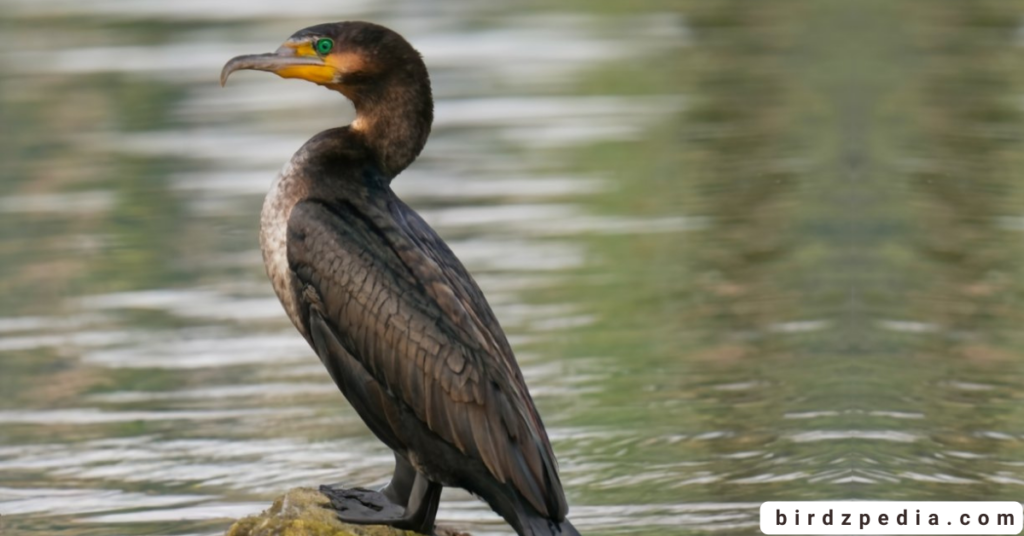
Summary
- Species Name: Phalacrocorax carbo
- Common Names: Great Cormorant, black shag, kawau (in New Zealand)
- Geographical Distribution: Found globally, breeding in the Old World, Australia, and the Atlantic coast of North America.
- Distinctive Features: Large water bird with black plumage, long neck, and hooked bill.
- Behavior: Skilled diver and swimmer; adopts wing-drying posture after fishing.
- Etymology: Genus name combines “phalakros” (bald) and “korax” (raven) in Latinized Ancient Greek; “carbo” in Latin means “charcoal.”
- Description:
- A large water bird with black plumage, long neck, and a hooked bill.
- Wingspan: Approximately 130-160 cm.
- Distinctive wing-drying posture after fishing.
- Variations:
- Known as the black shag or kawau in New Zealand.
- Formerly referred to as the great black cormorant (Northern Hemisphere), black cormorant (Australia), and large cormorant (India).
- Breeding:
- Breeds in various locations across the Old World, Australia, and North America.
- Feeding:
- Highly skilled in diving and swimming.
- Efficient underwater hunter, primarily feeds on fish.
- Relationships with Humans:
- Interactions with humans vary; some may consider them pests due to fishing habits.
- Historically used in fishing practices in some cultures.
- Conservation efforts and human impact on their habitats can affect populations.
Taxonomy and Etymology
Sub-Saharan Africa is home to the white-breasted cormorant (Phalacrocorax carbo lucidus), which has a characteristic white neck and breast. Its length ranges from 80 to 100 cm (30 to 40 in). As Phalacrocorax lucidus, some scholars (Sibley & Monroe, 1990; Sinclair, Hockey & Tarboton, 2002) view it as a distinct
species. There are additional recognized subspecies that are geographically distinct, such as P. c. hanedae (Japan), P. c. maroccanus (north-western Africa), and P. c. sinensis (western Europe to east Asia). Within the P. carbo superspecies group, some writers consider these subspecies to be allospecies.
The subspecies P. c. novaehollandiae is known as the black shag, or “kawau” in Māori, in New Zealand. The Museum of New Zealand Te Papa Tongarewa has a syntype of this species in its collection.
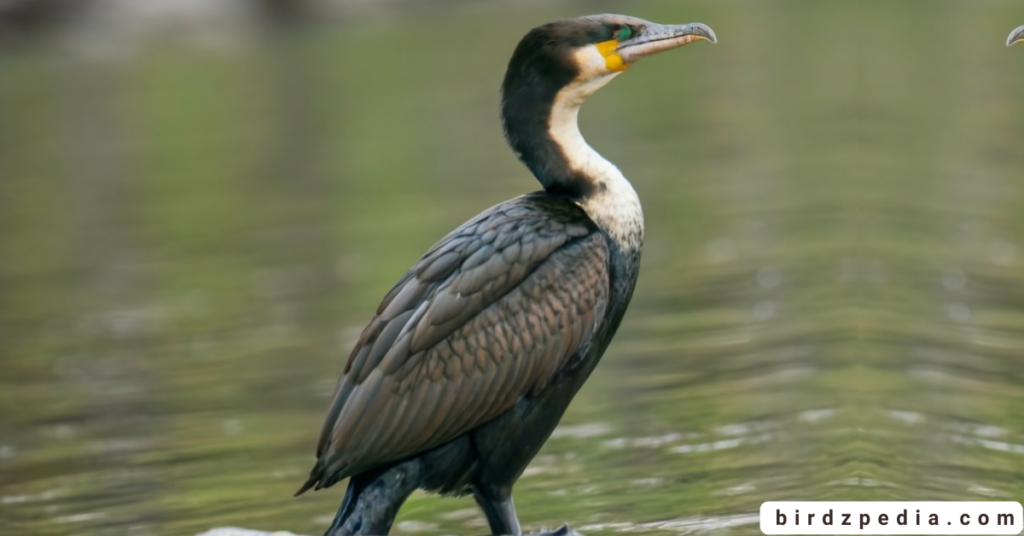
Description
| Characteristics | Details |
|---|---|
| Size | The Great Cormorant exhibits wide size variation, with reported weights ranging from 1.5 kg (3 lb 5 oz) to 5.3 kg (11 lb 11 oz). Length varies from 70 to 102 cm (27+1⁄2 to 40 in). Wingspan ranges from 121 to 160 cm (47+1⁄2 to 63 in). |
| Sexual Dimorphism | Males are generally larger and heavier than females. The nominate race (P. c. carbo) is about 10% larger in linear measurements than the smallest race in Europe (P. c. sinensis). |
| Weight Variations | In Germany, males of the P. c. sinensis race averaged 2.28 kg (5 lb 1⁄2 oz), while females averaged 1.94 kg (4 lb 4+1⁄2 oz). Prince Edward Island in Canada recorded P. c. carbo males averaging 3.68 kg (8 lb 2 oz) and females 2.94 kg (6 lb 7+1⁄2 oz). |
| Extant Species Size Ranking | Tied as the second-largest extant cormorant species, with size comparable to the Japanese cormorant; smaller than the flightless cormorant. The blue-eyed shag species complex of the Southern Oceans is comparable in bulk. |
| Physical Features | Longish tail, yellow throat-patch, and white patches on thighs and throat during breeding season. |
| Identification Characteristics (Europe) | Distinguished from the common shag in European waters by larger size, heavier build, thicker bill, lack of crest, and plumage without a green tinge. |
| Identification Characteristics (North America) | In eastern North America, larger and bulkier than the double-crested cormorant. The great cormorant lacks green tinge, crest, and has more yellow on the throat and bill. White thigh patches are frequent in Phalacrocorax carbo |
| Vocalization | Mostly silent, with various guttural noises produced at breeding colonies. |

Variations
Albinism is linked to a very rare mutation of them. Phalacrocorax carbo albino, the albino variety, has very limited chances of surviving in the wild because to impaired eyesight and/or hearing.
Distribution
This bird species is quite abundant and extensively dispersed; it typically forages in freshwater lakes, rivers, and estuaries as well as the ocean. Birds from the north migrate south according to migratory patterns, spending the winter along any shore with an abundance of fish. The habitat of cormorants is
established in the Vojvodina area of Serbia. The construction of man-made lakes in Serbia after 1945 has given cormorants possible places to live. Interestingly, a permanent colony of cormorants currently resides in Lake Čelije, which was formed in 1980. Except for the freezing periods in January–February
1985 and February 2012, when the lake surface was totally cemented, these birds build their nests there and stay there all year round. P. c. carbo is the main subspecies that lives in the Atlantic and nearby interior seas. Its range extends from the shores of western Europe to the Palearctic, via Siberia, North
Africa, the Faroe Islands, Iceland, Greenland, and the eastern shoreline of North America. The subspecies P. c. novaehollandiae, on the other hand, does well in Australian waters.
Behaviour
Breeding
- They commonly form colonies for nesting near wetlands, rivers, and sheltered inshore waters.
- Pairs exhibit nest site fidelity, using the same location for breeding in successive years.
- Nest construction involves sticks and occurs in trees, on cliffs’ ledges, and on predator-free rocky islands.
- The cormorant lays three to five eggs measuring 63 by 41 millimeters on average.
- Egg coloration is pale blue or green, often covered with a white chalky layer.
- Incubation period for the eggs lasts approximately 28 to 31 days.

Feeding
They gathers its food by diving underwater to capture its prey. This is a species of bird that eats flathead, common soles, sand smelt, and wrasses as its primary food. Fish taken by great cormorants have different weights depending on the air and water temperatures in which they are found.
For example, in summer, their average weight is 30 g; in winter, it is 109 g; and in winter, it is 157 g. These weight numbers apply to non-breeding individuals. In summer, cormorants eat any fish that fits into their proper size range, but in winter, they seem to favor larger, mostly torpedo-shaped fish. Several
researchers have reported increased foraging efficiency during the winter, which they ascribe to the cormorants’ capacity to catch larger fish rather than an increase in the total amount of fish they manage to catch.There have been estimates of significant fish losses, up to 80 kg per hectare per year, in some
freshwater systems where their overwinter, such the Czech Republic’s Vltava River. During underwater foraging excursions, this specific cormorant uses a diving tactic to secure its meal, skillfully grabbing it in its mouth. Its dives are astonishingly long—about 28 seconds—and they descend to
depths of about 5.8 meters (19 feet 0 inches). Interestingly, over 60% of these dives are focused on the benthic zone, 10% go into the pelagic zone, and the remainder dives explore the zones in between. The results of research suggest that the aural senses of cormorants have developed for maximum underwater
operation, which may improve their capacity to recognize fish. But these adaptations come with a price: they become less sensitive to sounds in the air, which indicates that their capacity to hear in non-aquatic settings is impaired.
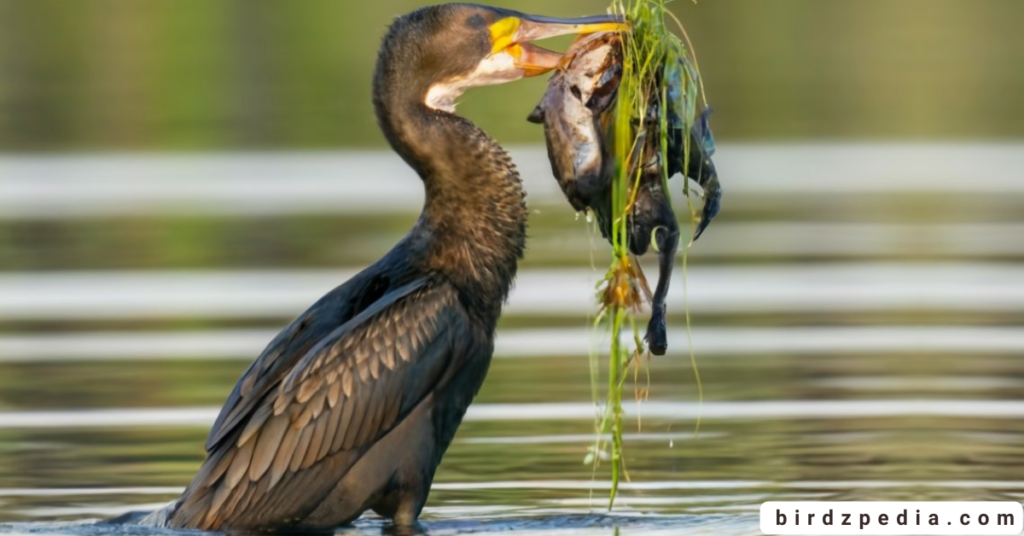
Species in same Genus
| Species | Common Name |
|---|---|
| Phalacrocorax brasilianus | Neotropic Cormorant or Olivaceous Cormorant |
| Phalacrocorax carbo | Black Shag |
| Phalacrocorax auritus | Double-crested Cormorant |
| Phalacrocorax lucidus | White-breasted Cormorant |
| Phalacrocorax pelagicus | Pelagic Cormorant or Baird’s Cormorant |
Relationships with Humans
- They, perceived as a fishery competitor, was nearly hunted to extinction in the past.
- Conservation efforts have successfully increased its population, with approximately 1.2 million birds in Europe based on winter counts.
- Growing numbers of cormorants have led to renewed conflicts with fisheries, especially in regions like Britain where inland breeding has become more common.
- In the UK, some licenses are issued annually to cull specific numbers of cormorants to mitigate predation, although it remains illegal to kill them without such permits.
- Cormorant fishing is a practiced tradition in China, Japan, and globally, involving fishermen using cormorants to catch fish with lines tied around their throats.
- In Norway, cormorants are considered a traditional game bird, and approximately 10,000 are shot and consumed annually.
- In North Norway, cormorants are viewed as semi-sacred, believed to bring good luck when gathering near villages, and an old legend suggests they are the spirits of those lost at sea, visiting their homes in the shape of cormorants on the mythical island Utrøst.
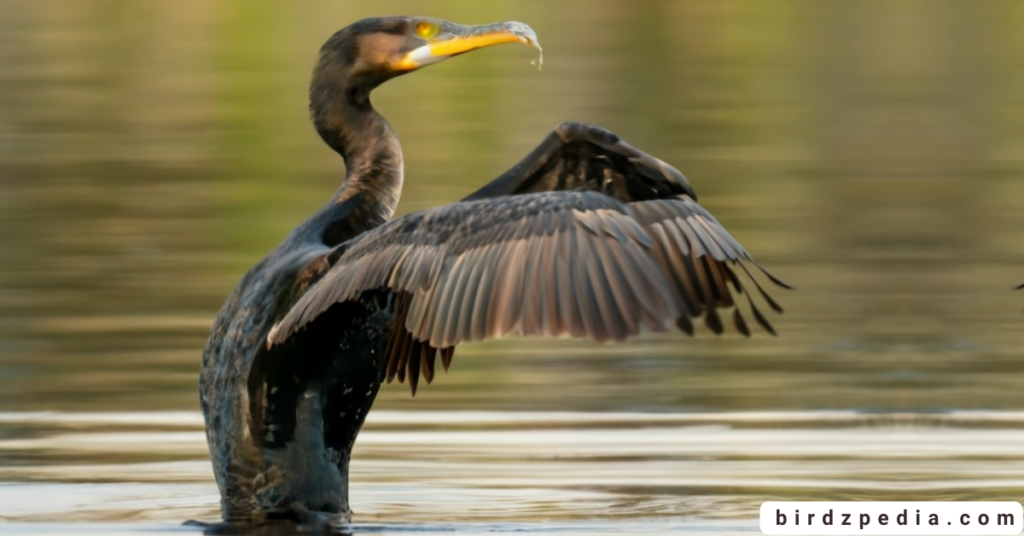
Sound
They makes a range of croaking and guttural sounds with its vocalizations. Deep, grunting cries are made by these birds, especially in the breeding season. A variety of noises, like as throaty growls and low-frequency croaks, are frequently heard during courtship displays or at breeding
colonies. Generally loud and unmelodic, cormorants’ vocal repertoire is characterized by harsh sounds. Even while their calls are not as melodic as those of certain other songbirds, they are nonetheless unique and important for interspecies communication, especially in the breeding season.
Lifespan
Their lifespan is usually between 10 and 20 years, depending on the environment, predation, and threats from humans. The actual longevity of these birds can vary depending on individual differences and outside factors.
Speed
It is recognized for its diving and swimming abilities rather than its fast flying. Its flight speed fluctuates, but it usually stays on a straight and level course. Swift airborne movements are not as important to cormorants as underwater fishing and foraging.
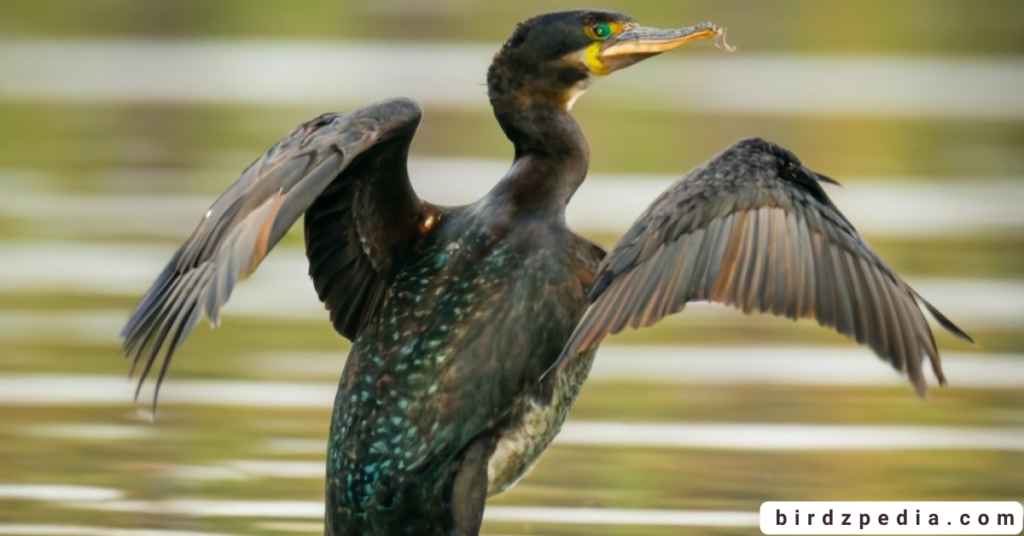
Threats
- Human Disturbance:
- Human activities, including recreational disturbance, habitat destruction, and shoreline development, can disrupt nesting colonies and foraging areas of their.
- Overfishing and Competition:
- Cormorants are often perceived as competitors by fishermen, leading to conflicts. Overfishing in certain areas can reduce the availability of prey, affecting the bird’s food source.
- Hunting and Culling:
- Historically, cormorants were hunted for their feathers and perceived threat to fish stocks. In some regions, culling is still practiced to reduce predation on fisheries, posing a direct threat to the population.
- Pollution:
- Water pollution, including oil spills and contamination from industrial chemicals, can impact the quality of the cormorants’ aquatic habitats and affect their health through contaminated prey.
- Climate Change:
- Changes in climate patterns can affect the availability and distribution of fish, potentially impacting the food supply for them.
- Loss of Nesting Sites:
- Destruction and alteration of natural habitats, especially nesting sites on cliffs and islands, can limit suitable locations for breeding, leading to population declines.
- Accidental Capture:
- Cormorants may accidentally get entangled in fishing gear such as nets and lines, leading to injury or death.
- Introduced Predators:
- Nesting colonies are vulnerable to introduced predators like rats and mink, which can prey on eggs and chicks, affecting reproductive success.
- Disease:
- Diseases, including avian influenza and other pathogens, can pose a threat to Great Cormorant populations, especially in dense breeding colonies.
- Artificial Nesting Structures:
- In some cases, the installation of artificial structures for nesting, such as platforms, may attract cormorants to areas where they face increased risks from predators or human activities.
Common Names in Different Languages
| Language | Common Name |
|---|---|
| English | Great Cormorant |
| Spanish | Cormorán Grande |
| French | Grand Cormoran |
| German | Kormoran |
| Italian | Cormorano comune |
| Portuguese | Corvo-marinho-de-faces-brancas (Brazil) |
| Russian | Большой баклан (Bol’shoy baklan) |
| Chinese | 大鸬鹚 (Dà lú cí) |
| Japanese | カワウ (Kawau) |
| Hindi | ग्रेट कॉर्मोरंट (Great Cormorant) |
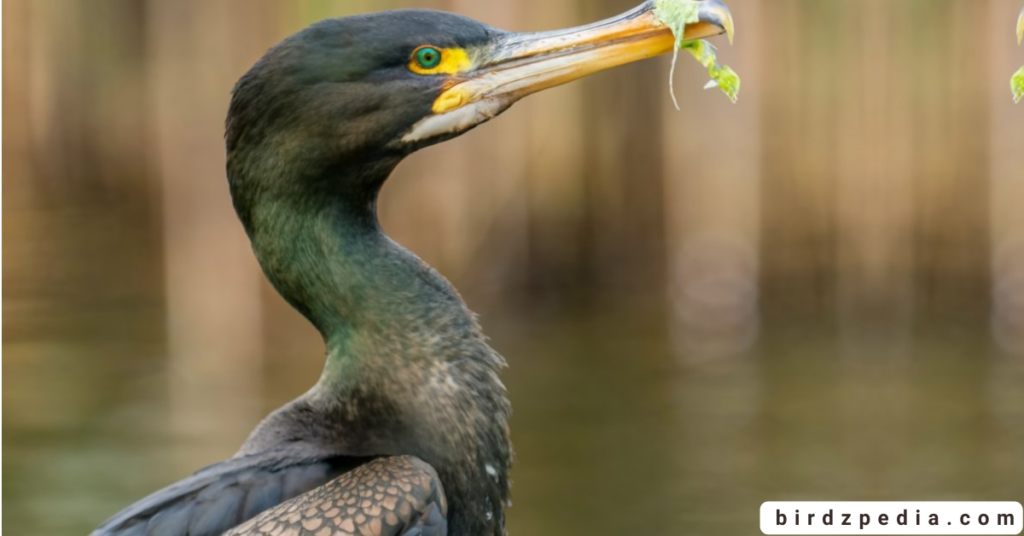
FAQs
- What is the Great Cormorant?
- The Phalacrocorax carbo, is a big aquatic bird that is distinguished by its black plumage and adeptness at diving and fishing.
- Where are they found?
- They are found all throughout Europe, Asia, Africa, and Australia. They live in freshwater settings, inland waters, and coastal areas.
- What does they eat?
- Fish makes up the majority of their diet, however they occasionally eat crustaceans and other aquatic animals. They are expert divers and hunters.
- How long do Great Cormorants live?
- They have a lifespan of 10 to 20 years, with differences caused by predation, environmental factors, and threats from humans.
- Do they migrate?
- Indeed, while some their populations are resident, others migrate. There might be variations in migration patterns due to variables like food availability and climate.
- Are they are protected species?
- Although the state of conservation varies by area, they are not usually regarded as endangered. They endured habitat degradation and hunting in some places, which raised questions about conservation.
- How do Cormorants differ from other water birds?
- Dark feathers, a long neck, and a hooked bill characterize cormorants. Since they don’t have feathers that repel water, they are great divers but must dry their wings after swimming.
- Do Cormorants pose challenges for fisheries?
- Yes, fishermen do consider they to be a rival. Perceived dangers to fish populations give rise to disputes in certain locations, prompting attempts towards conservation and control.
- Can Cormorants be kept as pets?
- Since they are wild birds, they should not be kept as pets. Conservation efforts are often undermined because it is illegal to keep them without the appropriate permissions.
- Are there any cultural beliefs associated with them?
- They have symbolic meaning in certain civilizations. For instance, they are regarded as semi-sacred and their presence is auspicious in North Norway.


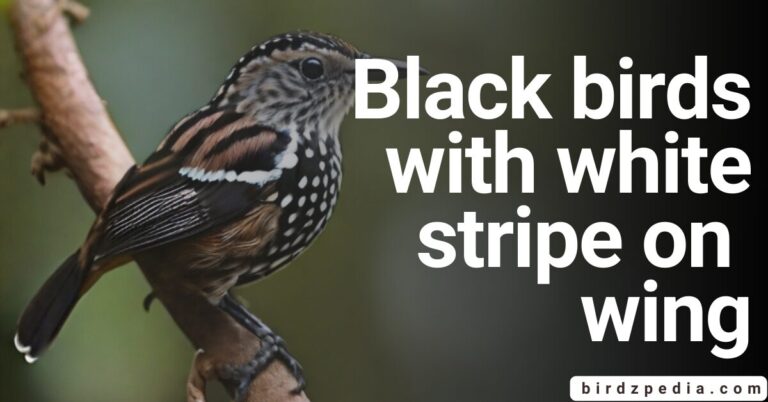
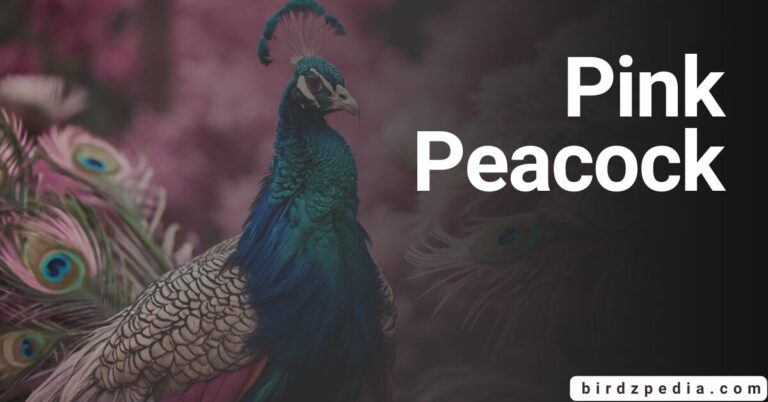
![Northern bald ibis: [Geronticus eremita] Discovering Nature’s Secrets](https://birdzpedia.com/wp-content/uploads/2024/01/Northern-Frigatebird-768x402.png)
![AFRICAN OPENBILL[Anastomus lamelligerus]: Stork Species, Habitat, and Behaviors](https://birdzpedia.com/wp-content/uploads/2023/12/AFRICAN-OPENBILL-Anastomus-lamelligerus-Facts-Habitat-1-1-768x402.png)
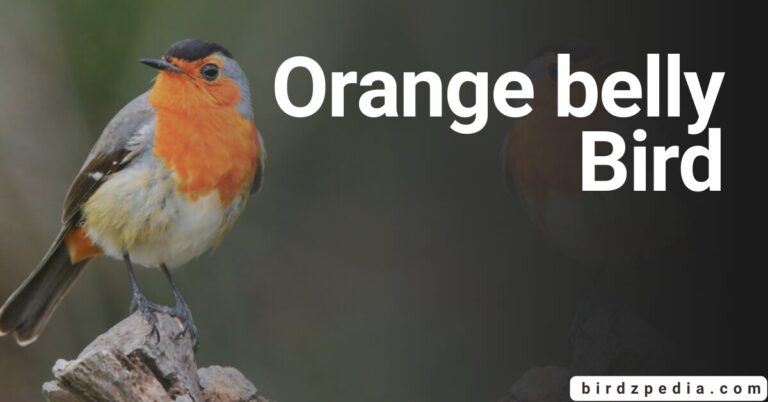
![Into The world of the Little Cormorant [Microcarbo niger]](https://birdzpedia.com/wp-content/uploads/2024/01/Little-cormorant-768x402.jpg)